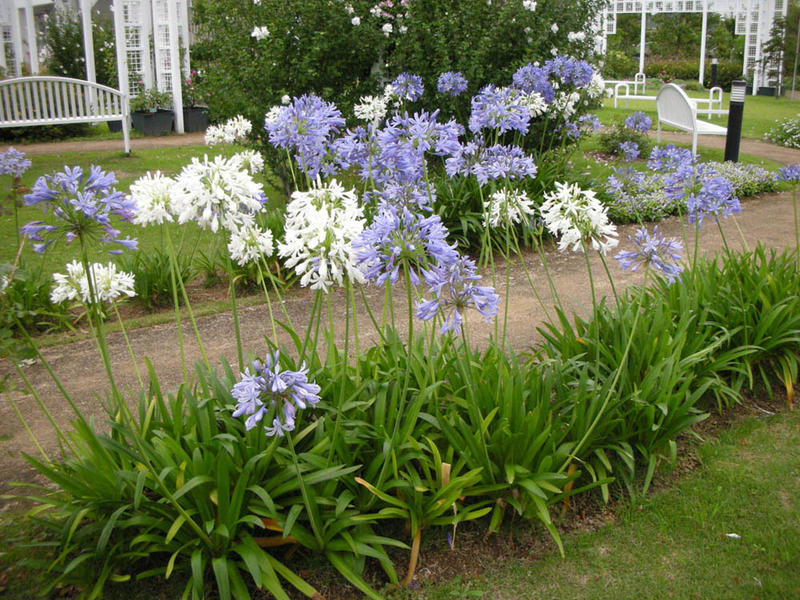Stunning Agapanthus: Enhancing Your Yard's Elegance
Releasing the Secret to Successful Agapanthus Growing: Advice for a Flourishing Yard
In the world of horticulture, cultivating agapanthus effectively needs a critical approach that includes numerous aspects of plant treatment. By recognizing the nuances of agapanthus growing, one can produce a setting where these plants grow and bloom generously.
Growing Agapanthus: Ideal Practices
When growing Agapanthus, correct soil preparation is vital for making sure effective development and growth of these gorgeous flowers. Agapanthus, typically called Lily of the Nile or African lily, grows in well-draining dirt with a somewhat acidic to neutral pH degree - Agapanthus. Prior to growing, it is critical to amend hefty clay dirts with raw material such as garden compost or peat moss to boost water drainage and give essential nutrients for the plants
To plant Agapanthus, choose a location that receives full sunshine to partial color, as this will certainly advertise healthy and balanced development and plentiful flowering. Dig a hole twice the diameter of the plant's origin round and position the Agapanthus at the very same deepness it was previously growing. Gently backfill the hole with dirt, pushing down strongly to eliminate any type of air pockets around the roots.
Water the newly planted Agapanthus extensively and proceed to maintain the soil evenly moist, specifically throughout the plant's energetic growing season. Agapanthus. Using a balanced fertilizer once a month can additionally support the plant's growth and blooming. By complying with these finest practices for growing Agapanthus, you can develop a sensational screen of these captivating blossoms in your yard
Ideal Dirt Issues for Agapanthus
For ideal growth and flowering success of Agapanthus plants, guaranteeing the dirt conditions are excellent is vital. Agapanthus prefers dirt that is rich in nutrients, so integrating a well balanced fertilizer throughout the growing period can advertise healthy development and lively blooms.
Watering and Fertilizing Tips
To ensure healthy and balanced development and vivid blossoms, appropriate watering and fertilizing methods are important for successful Agapanthus cultivation. Agapanthus plants profit from routine watering, especially during the expanding period.
When it pertains to fertilizing Agapanthus, a balanced plant food with equal parts nitrogen, phosphorus, and potassium can be used in the springtime to promote healthy development and blooming. Slow-release fertilizers are perfect for providing nutrients progressively over an extensive period. Avoid over-fertilizing, as this can lead to too much vegetation growth at the cost of blooms.
In addition, incorporating natural issue like compost right into the soil can boost nutrient levels and improve soil structure, assisting in the total wellness of the Agapanthus plants. By adhering to these watering and fertilizing tips, garden enthusiasts can ensure their Agapanthus plants thrive and create spectacular displays of blossoms.
Pruning and Deadheading Strategies
Appropriate trimming and deadheading her explanation methods play an essential duty in preserving the wellness and looks of Agapanthus plants, matching the essential methods of watering and fertilizing for successful farming. Trimming Agapanthus involves removing invested blossom heads, yellowing or dead fallen leaves, and overall shaping of the plant to advertise better development. Deadheading, the procedure of removing faded blossoms, not just improves the plant's look but likewise urges further growing.
When deadheading Agapanthus, it is advisable to clip off the blossom stem at the base using sharp, tidy shears. This process redirects the plant's power from seed production back into root and foliage growth, advertising a healthier and a lot more durable plant. Normal deadheading can extend the blooming duration of Agapanthus and protect against self-seeding, which can lead to overcrowding.
In terms of pruning, Agapanthus normally take advantage of a light trim after flowering to clean up the plant and urge fresh development. Reducing the spent blossom stems and getting rid of any kind of dead or damaged foliage aids keep the plant's vigor and overall appearance. Nevertheless, it is crucial to avoid cutting into the crown of the plant, as this can deteriorate its wellness.

Protecting Agapanthus From Pests and Diseases
Implementing reliable bug and illness management strategies is critical to protecting the health and vigor of Agapanthus plants in growing. One typical parasite that influences Agapanthus is the company website Agapanthus borer, a caterpillar that tunnels into the plant, creating damage to the flowers and fallen leaves.
In enhancement to insects, Agapanthus are susceptible to conditions such as root rot and fungal leaf places. These issues can often be protected against by making sure appropriate water drainage and preventing overwatering. If signs of disease appear, influenced parts of the plant need to be immediately removed to avoid further spread. Fungicides may additionally be utilized as a therapy step, adhering to the producer's guidelines carefully. By remaining vigilant and attending to pest and illness concerns immediately, garden enthusiasts can aid their Agapanthus thrive and prosper.

Final Thought
In verdict, effective farming of agapanthus needs proper growing techniques, optimal soil conditions, appropriate watering and feeding, routine pruning and deadheading, and security from bugs and illness. By following these methods and suggestions, gardeners can ensure a flourishing yard full of attractive agapanthus blossoms. Agapanthus. Bear in mind to keep constant care and attention to detail to advertise the wellness and durability of these sensational plants
When planting Agapanthus, proper dirt prep work is necessary for guaranteeing successful growth and growth of these lovely flowers.Water the newly grown Agapanthus extensively and continue to keep the dirt uniformly moist, especially throughout the plant's active growing period.For ideal growth and growing success of Agapanthus plants, ensuring the dirt conditions are excellent is vital. When planting or transplanting Agapanthus, ensure the dirt is well-prepared to offer the necessary structure for the plants to establish themselves efficiently. One typical pest that influences Agapanthus is the Agapanthus borer, a Learn More Here caterpillar that passages into the plant, creating damage to the leaves and flowers.